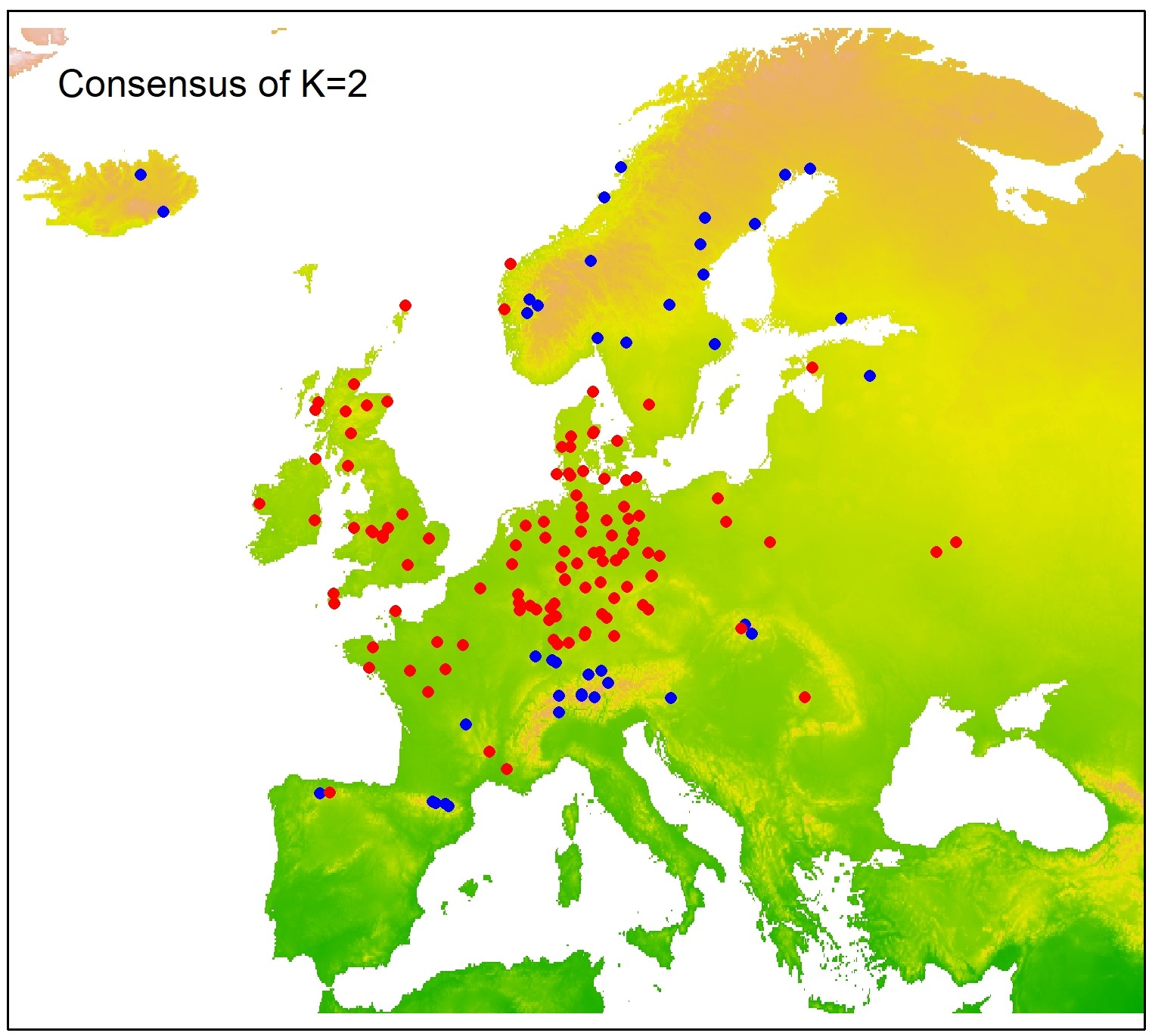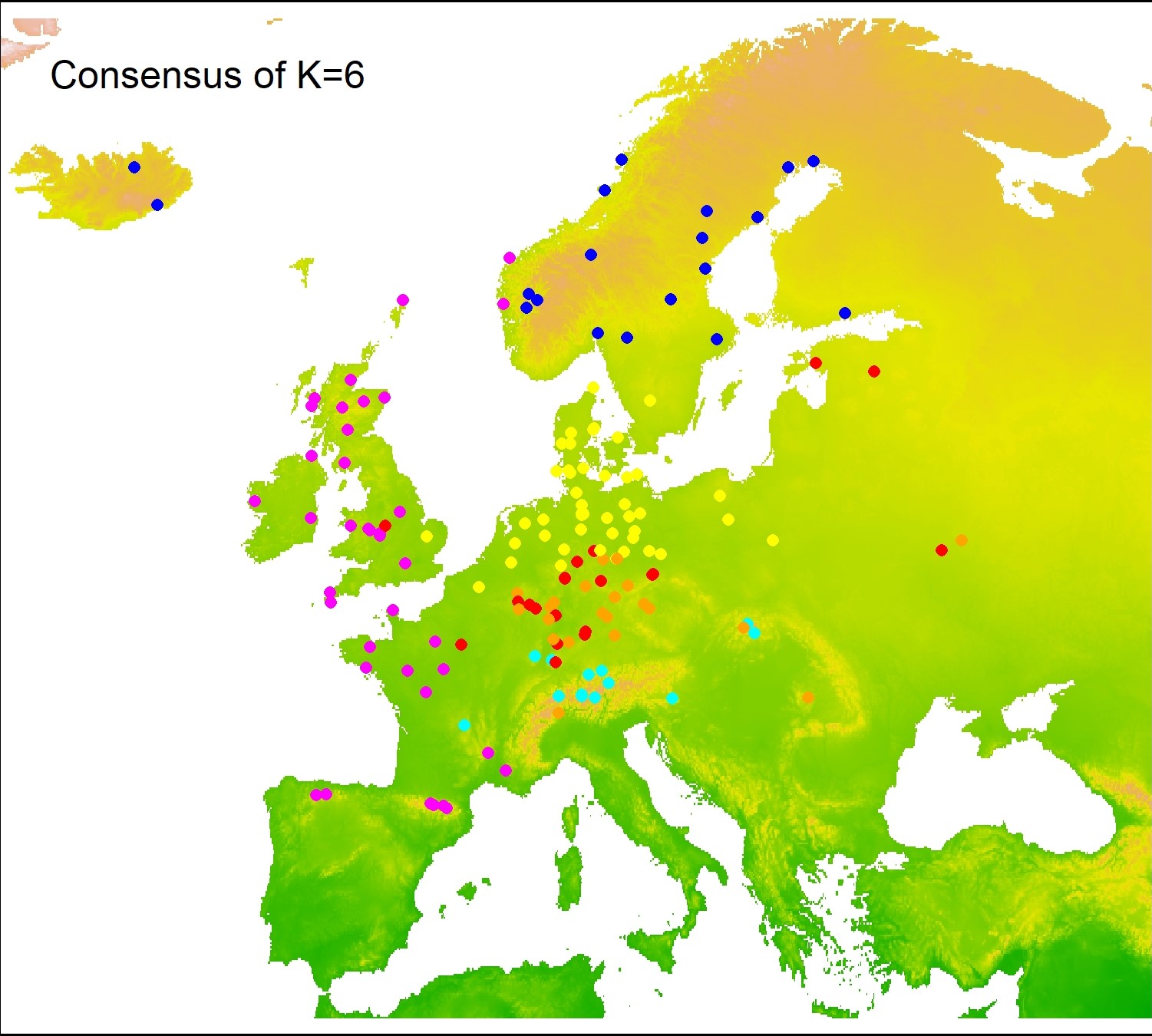Request and sampling instructions for Calluna vulgaris
Within the Project Öko-Kult , the management of Calluna-heathland is investigated. One aspect will be to study intraspecific genetic variation of heather and the relationship between environmental conditions and genetics.
Background: Heather (Calluna vulgaris) has a large geographic distribution in Europe and is dominating many heath ecosystems. Global change, i.e. land use change, pollution and climate change affect heath ecosystems. These threats resulted in various restoration efforts, including assisted migration, i.e. the translocation of heath from putatively “preadapted” southern populations to more northern sites that in future will experience similar climatic conditions. However, we do have very limited knowledge about the phylogeographic structure and patterns of genetic variation and its relation to environmental conditions across the range of Calluna vulgaris, that might inform such actions.
Objectives: we analyse the genetic structure of Calluna vulgaris across its whole distribution range. We address intraspecific genetic relationships that resulted from the history of colonisation and from selection due to environmental conditions.
Results of preliminary analyses (see below) should be consolidated and refined by additional samples.This is particularly important, first for the contact zones of potential genetic clusters, e.g. in E France, East of England, S Norway, S Sweden and pre-alpine areas. Second, there are large under- or unsampled regions, e.g. Iberian peninsula, Balkans, Carpathians, Northern Scandinavia, and in particular Eastern Europe. Therefore we would like to ask for additional help in sampling Calluna vulgaris from under-sampled regions from all vegetation types including heath, bog, grassland and forest. Sampling is easy and does not necessitate any special skill or device.
Choosing sites: Choose large old populations, avoid recently founded and very small populations. If you can sample more than one site, they should be several kilometres apart. As we sample across the whole range and our resources are limited, the distance between adjacent sampling sites will generally be >100 km. Thus, if you intend to collect, please first get in contact with us (
email Walter Durka
) and/or consult the map of sites already sampled, as to know whether your region is already sampled.
Sampling At a sampling site, choose 20 plants at random and with at least 10m distance between choosen plants. Plant must have young, healthy and clean leaves. From each plant collect a twig with this years’ leaves and place it in a separate paper bag/envelope. If fruits with seeds are available on the same plant, collect an inflorescence and put in the same bag. Label the bag with site name and consecutive numbers 1 to 20. Let dry in the air, or, if available, in a drying chamber at 50°C.
Send the 20 bags and the form below to Walter Durka, Helmholtz Centre for Environmental Research-UFZ, Department Community Ecology, Theodor-Lieser-Straße 4, D- 06120 Halle (Saale) Germany.
Download sampling instructions: Sampling Calluna vulgaris2.pdf .
Preliminary results
We analyze the intraspecific genetic structure of Calluna vulgaris across its whole distribution range. With the help of about 100 voluntary collectors, 170 populations were already sampled, and genotyped at thousands of SNP loci using ddRAD and a population pool approach. Preliminary results show phylo-geographic patterns that partly match those of other species (Fig. 1) and also indicate close gene-environment interactions.


Fig. 1. Spatial structure of intraspecific genetic groups derived from SNP data of Calluna vulgaris populations (Durka et al. unpublished) for either K=2 or K=6 assumed clusters.
